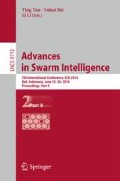Abstract
Short linear motifs (SLiMs) play a central role in several biological functions, such as cell regulation, scaffolding, cell signaling, post-translational modification, and cleavage. Identifying SLiMs is an important step for understanding their functions and mechanism. Due to their short length and particular properties, discovery of SLiMs in proteins is a challenge both experimentally and computationally. So far, many existing computational methods adopted many predicted sequence or structures features as input for prediction, there is no report about using position-specific scoring matrix (PSSM) profiles of proteins directly for SLiMs prediction. In this study, we describe a simple method, named as PSSMpred, which only use the evolutionary information generated in form of PSSM profiles of protein sequences for SLiMs prediction. When comparing with other methods tested on the same datasets, PSSMpred achieves the best performances: (1) achieving 0.03–0.1 higher AUC than other methods when tested on HumanTest151; (2) achieving 0.03–0.05 and 0.03–0.06 higher AUC than other methods when tested on ANCHOR-short and ANCHOR-long respectively.
Access this chapter
Tax calculation will be finalised at checkout
Purchases are for personal use only
References
Pallab, B., Mainak, G., Peter, T.: Intrinsically Disordered Proteins Studied by NMR Spectroscopy. Chapter 9 (2014)
Ward, J.J., Sodhi, J.S., McGuffin, L.J., Buxton, B.F., Jones, D.T.: Prediction and functional analysis of native disorder in proteins from the three kingdoms of life. J. Mol. Biol. 337(3), 635–645 (2004)
Tompa, P., Norman, E.D., Toby, J.G., Mabu, M.M.: A million peptide motifs for the molecular biologist. Mol. Cell 55(2), 161–169 (2014)
Davey, N.E., Cowan, J.L., Shields, D.C.: Conservation-based discovery of functional motif fingerprints in intrinsically disordered protein regions. Nucleic Acids Res. 40(21), 10628–10641 (2012)
Martin, C.F., Neil, F.W., Bostjan, K., Timothy, L.B.: Discovering sequence motifs with arbitrary insertions and deletions. PLoS Comput. Biol. 4(5), e1000071 (2008)
Timothy, L.B., Nadya, W., Chris, M., Wilfred, W.L.: MEME: discovering and analyzing DNA and protein sequence motifs. Nucleic Acids Res. 34(Suppl 2), W369–W373 (2006)
Dosztanyi, Z., Mszros, S.I.: ANCHOR: web server for predicting protein binding regions in disordered proteins. Bioinformatics 25(20), 2745–2746 (2009)
Dosztanyi, Z., Csizmok, V., Tompa, P., Istvn, S.: IUPred: web server for the prediction of intrinsically unstructured regions of proteins based on estimated energy content. Bioinformatics 21(16), 3433–3434 (2005)
Mooney, C., Pollastri, G., Shields, D.C., Haslam, N.J.: Prediction of short linear protein binding regions. J. Mol. Biol. 415, 193–204 (2012)
Dinkel, H., Van, R.K., Michael, S., et al.: The eukaryotic linear motif resource ELM: 10 years and counting. Nucleic Acids Res. 42, D259–D266 (2014)
Altschul, S.F., Madden, T.L., Schaffer, A.A., et al.: Gapped BLAST and PSI-BLAST: a new generation of protein database search programs. Nucleic Acids Res. 25, 3389–3402 (1997)
Chang, C.C., Lin, C.J.: LIBSVM: a library for support vector machines. ACM Trans. Intell. Syst. Technol. 2(27), 1–27 (2011)
CASP10. http://predictioncenter.org/casp10/doc/presentations/CASP10_DR_KF.pdf
R statistical package. http://www.r-project.org/
Fang, C., Noguchi, T., Yamana, H.: MFSPSSMpred: identifying short disorder-to-order binding regions in disordered proteins based on contextual local evolutionary conservation. BMC Bioinform. 14, 300 (2013)
Acknowledgment
We gratefully thank Dr. Catherine Mooney for providing us with the datasets of SLiMPred, and Professor Xiaohong Liu of Shandong University of Technology for providing a lot of convenience for our study. This work was supported by a grant from Natural Science Foundation of Shandong Province (NO. ZR2014FQ028). We also thank the anonymous reviewers for his/her helpful comments, which improved the manuscript.
Author information
Authors and Affiliations
Corresponding author
Editor information
Editors and Affiliations
Rights and permissions
Copyright information
© 2016 Springer International Publishing Switzerland
About this paper
Cite this paper
Fang, C., Noguchi, T., Yamana, H., Sun, F. (2016). Identifying Protein Short Linear Motifs by Position-Specific Scoring Matrix. In: Tan, Y., Shi, Y., Li, L. (eds) Advances in Swarm Intelligence. ICSI 2016. Lecture Notes in Computer Science(), vol 9713. Springer, Cham. https://doi.org/10.1007/978-3-319-41009-8_22
Download citation
DOI: https://doi.org/10.1007/978-3-319-41009-8_22
Published:
Publisher Name: Springer, Cham
Print ISBN: 978-3-319-41008-1
Online ISBN: 978-3-319-41009-8
eBook Packages: Computer ScienceComputer Science (R0)

